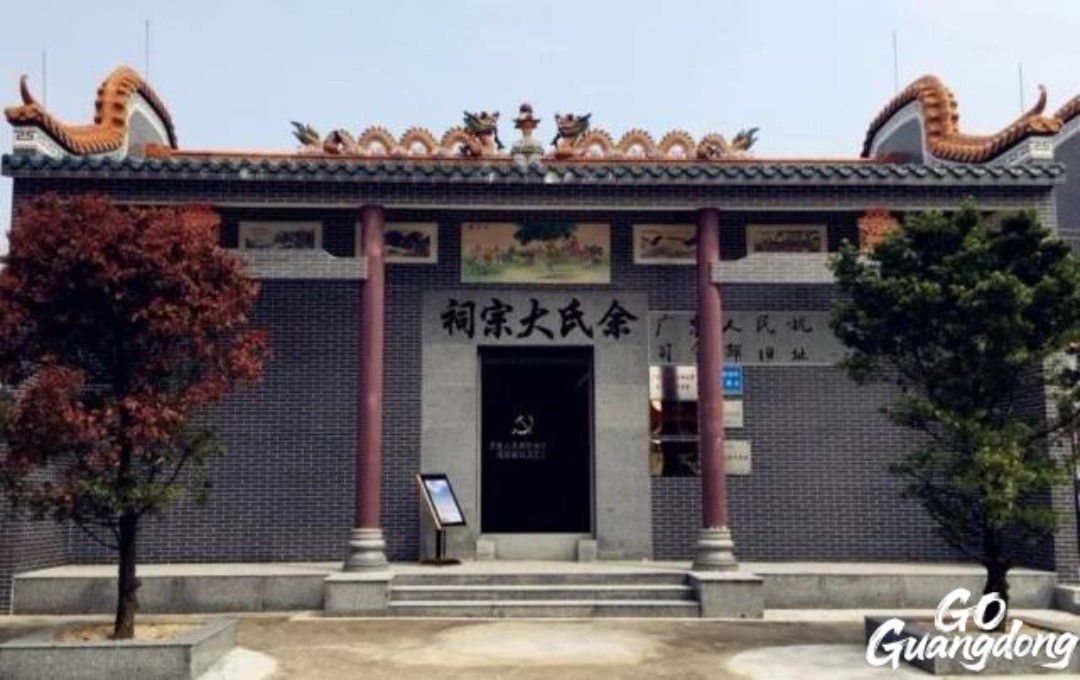
Former Site of Guangdong People's Counter-Japanese Liberation Army Command, Jiangmen City
Originally, this site housed the Yu Ancestral Hall built in the Qing Dynasty. On November 7, 1944, the leading organization and main brigade of the Guangdong People's Counter-Japanese Guerrilla Central Column liberated Zhaiwu Town and marched into Jingcun Village, establishing their headquarters within the ancestral hall.
Since then, the counter-Japanese struggle in Central Guangdong entered a new phase of independently led guerrilla warfare behind enemy lines by the Communist Party of China.
In December 1944, the Temporary Committee of the Guangdong Provincial CPC Committee and the Dongjiang Military-Civilian Committee convened the Zhaiwu Conference in the Zaomu Mountain area of Central Guangdong. The conference resolved to dissolve the Central District Column and establish two new forces: the Guangdong People's Counter-Japanese Guerrilla Force Pearl River Column and the Guangdong People's Counter-Japanese Liberation Army.
On January 20, 1945, the Guangdong People's Counter-Japanese Liberation Army publicly announced its establishment via an open telegraph. A grand founding ceremony was held in Zhaiwu, Heshan, on January 29, with the command headquarters remaining stationed at the Yu Ancestral Hall.
Initially organized into four regiments, the army later expanded to include an independent battalion and the 5th, 6th, and Independent Regiments, totaling approximately 1,400 troops. Operating across a 100-kilometer radius, they launched 15 proactive fights and ambushes against the Japanese invasion and its puppet forces, engaging over 5,000 Japanese troops.
In June 1946, following directives from the Guangdong District CPC Committee for northward withdrawal, a minority of personnel withdrew with the Dongjiang Column, while the majority demobilized. Approximately 140 soldiers remained dispersed for self-defense operations, after which the army designation was formally retired.
1944年11月7日,广东人民抗日游击队中区纵队领导机关及主力大队解放宅梧,进驻靖村,司令部设于余氏宗祠。1945年1月20日,广东人民抗日解放军公开发表通电,正式宣布成立,29日在鹤山宅梧举行隆重的成立大会,司令部设于靖村余氏宗祠。广东人民抗日解放军成立初仅有4个团,至7月,增加了独立营、五团、六团和独立团,兵力约1400人;活动区纵横约二百里,包括高明、新会、鹤山、台山、开平、恩平、新兴、阳江、阳春等地。司令部驻此三个多月,领导了粤中区的抗日战争,并以宅梧为中心,开辟了皂幕山敌后抗日根据地。
Site (Chinese): 广东人民抗日解放军司令部旧址
add.: 江门市鹤山市宅梧镇靖村余氏宗祠后楼
Source: Department of Culture and Tourism of Guangdong Province, Nanfang Daily










